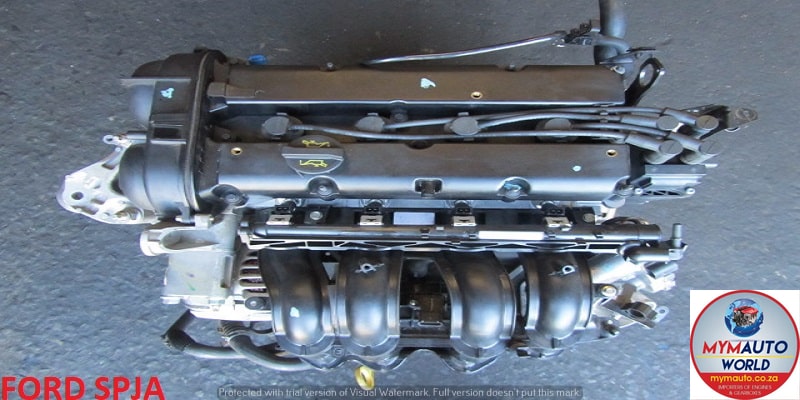Checking Out the Development of Engines: From Timeless Layouts to Modern Marvels
From the initial vapor engines that powered the Industrial Change to the introduction of interior burning engines that changed movement, each stage has actually contributed to higher efficiency and capacity. As we take a look at these milestones, one must take into consideration just how the future of engine style may unravel, challenging our understandings of power and performance.
The Birth of Engine Modern Technology
The development of engine technology noted a crucial minute in human innovation, transforming power conversion and transportation. The earliest engines arised from the need to harness mechanical power for functional usage, leading to the advancement of devices that converted different power forms right into motion (ford fiesta engine).
The development of the internal burning engine and the development of the heavy steam engine militarized an extensive change in industrial abilities. These engines not just boosted performance however additionally expanded the range of human movement, enabling unprecedented transport possibilities. The very early models prepared for the mechanical globe, helping with the increase of industries and improving social frameworks.
As engine designs developed, they included ingenious products and progressed engineering principles, leading the way for modern growths - ford fiesta engine. The birth of engine innovation sparked a relentless search of performance and power, setting the stage for the vibrant development of transportation and commercial equipment that would certainly follow
Vapor Engines and Their Effect

The heavy steam engine's effect was especially obvious in the transportation field (ford fiesta engine). Steam-powered locomotives helped with the fast motion of items and individuals throughout vast ranges, properly shrinking the geographical barriers that had actually formerly hindered profession and interaction. Similarly, steamships transformed marine traveling, permitting for quicker and extra trusted crossings of rivers and seas.
In industry, heavy steam engines powered factories, enabling automation and the rise of metropolitan facilities as hubs of economic task. This change not just altered labor dynamics however additionally added to the introduction of a consumer-driven culture. Steam technology fostered technologies in design and production procedures, laying the groundwork for future advancements in engine layout. The heritage of steam engines is extensive, reflecting a turning point in human resourcefulness and the unrelenting quest of progress.
The Rise of Inner Burning
Often outweighing heavy steam power, the rise of inner combustion engines noted a transformative change in transport and market during the late 19th and early 20th centuries. The development of these engines, defined by their capacity to burn fuel within the engine itself, enabled better effectiveness and power contrasted to typical steam engines. Introducing inventors such as Nikolaus Otto and Rudolf Diesel played crucial duties in developing engine designs, resulting in prevalent adoption in cars, watercrafts, and commercial machinery.
The inner burning engine's small dimension and Web Site fairly light-weight nature facilitated the development of personal cars, reinventing specific flexibility and improving city landscapes. By enabling faster travel and the reliable transportation of items, these engines militarized economic growth and fostered globalization. The flexibility of gas options, consisting of fuel and diesel, even more boosted their charm, enabling for varied applications throughout various fields.
Regardless of the environmental worries that would certainly later on occur, the first attraction of inner combustion modern technology stocked its transformative possibility. As culture accepted this advancement, the structure was laid for modern transport systems, developing internal burning engines as a foundation of industrial improvement and day-to-day live throughout the 20th century.
Developments in Engine Efficiency
As inner burning engines ended up being essential to transport and sector, the emphasis shifted in the direction of enhancing their performance to meet expanding needs for efficiency and sustainability. Advancements in engine layout, material scientific research, and technology have considerably added to this development.
One significant development is the advancement of turbocharging, which enables for raised air intake, resulting in more complete fuel burning and boosted power output without expanding engine size. Additionally, variable valve timing systems have actually been implemented to enhance engine performance across different RPM arrays, thereby enhancing gas performance.
The usage of advanced fuel injection innovations, such as straight injection, has actually click for info likewise played an important duty. This approach permits even more precise control over the fuel-air combination, advertising far better combustion and minimizing discharges. In addition, light-weight products, including light weight aluminum and composite components, have actually been adopted to minimize overall engine weight, causing boosted effectiveness.
These improvements show a more comprehensive trend within the automotive industry, where the synergy in between design innovation and ecological factors to consider drives the recurring quest for greater efficiency in interior combustion engines. Because of this, contemporary engines are currently a lot more powerful, cleaner, and effective than in the past, leading the way for a more sustainable future in transport.
The Change to Electric Power
With expanding worries over environmental influence and nonrenewable fuel source reliance, the auto sector is experiencing a substantial shift in the direction of electrical power. This change is driven by a combination of technological improvements, governing pressures, and transforming consumer choices. Electric automobiles (EVs) use an engaging option to standard interior combustion engines, boasting reduced greenhouse gas exhausts and reduced operating expense.
The rise of battery technology has been a video game changer, with lithium-ion batteries becoming more cost-effective and efficient. Boosted Full Article power thickness and faster billing capabilities have made EVs much more sensible for day-to-day use. Federal governments worldwide are implementing rewards and establishing ambitious targets for phasing out fossil gas cars, thereby accelerating the fostering of electric power.
As charging facilities expands and battery technology proceeds to improve, the change to electric power is poised to reshape the vehicle landscape, advertising sustainability and development in the years to come. The future of transportation is electric, and the momentum is undeniable.
Conclusion
The advancement of engine modern technology stands for a substantial trajectory of advancement that has actually exceptionally affected transportation and industry. From the foundational vapor engines to the transformative interior combustion engines, each advancement has actually contributed to enhanced movement and financial development.

 Alana "Honey Boo Boo" Thompson Then & Now!
Alana "Honey Boo Boo" Thompson Then & Now! Bug Hall Then & Now!
Bug Hall Then & Now! Joshua Jackson Then & Now!
Joshua Jackson Then & Now! Lynda Carter Then & Now!
Lynda Carter Then & Now! Bill Cosby Then & Now!
Bill Cosby Then & Now!